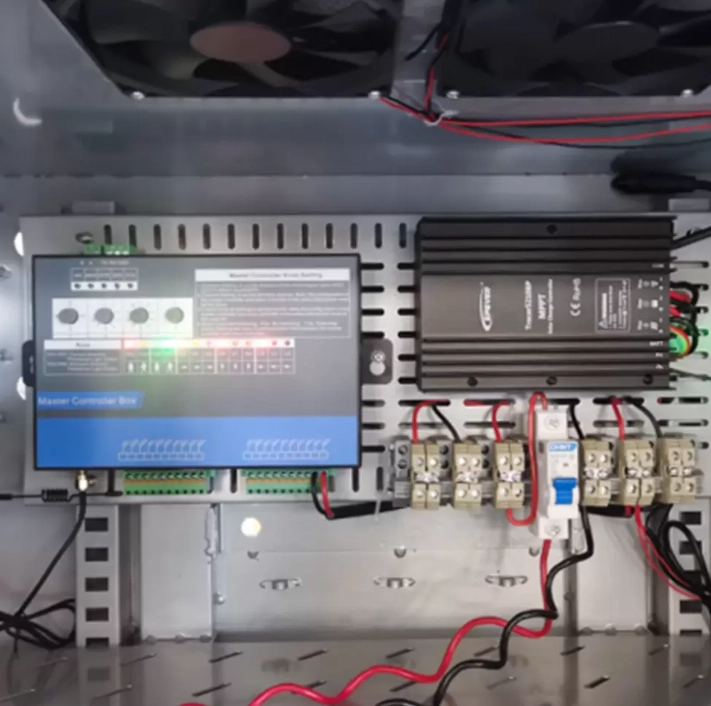Home > News > Industry News > Revolutionizing Urban Mobility: How FAMA Traffic Wireless Traffic Signals Are Shaping the Future of Smart Cities
Revolutionizing Urban Mobility: How FAMA Traffic Wireless Traffic Signals Are Shaping the Future of Smart Cities
In today’s rapidly urbanizing world, traffic congestion and intersection safety have become pressing concerns for city planners and traffic authorities. Installing wireless traffic signal controllers offers a transformative solution, delivering both safety and efficiency improvements at intersections. These advanced systems are designed to intelligently manage traffic flow, optimize signal timing, and reduce the risk of accidents, ultimately creating safer and smarter intersections for all road users. FAMA Traffic, a provider of integrated solutions for intelligent transportation, has been committed to building intelligent transportation with the corporate mission of “making travel safer and smarter.”

1. Enhanced Intersection Safety
Wireless traffic signal controllers significantly improve pedestrian and vehicle safety. By integrating real-time traffic and pedestrian flow monitoring, the system can dynamically adjust signal timings to prevent collisions and reduce waiting times. FAMA Traffic’s solutions incorporate IoT-based technologies such as coils, geomagnetism, RFID, radar, and visual identification to monitor intersections continuously. Additionally, low-voltage operation (DC 10–30V) ensures electrical safety, while compatibility with mains and solar power adds an extra layer of reliability, especially in areas with limited grid access.
2. Smarter Traffic Management
These controllers enable intelligent optimization of traffic signals, ensuring smoother traffic flow during peak and off-peak hours. Optional intelligent networking and remote control capabilities allow traffic managers to monitor intersections in real time, adjust signal configurations, respond to emergencies, and implement targeted control strategies that reduce congestion. FAMA Traffic’s expertise in traffic signal timing optimization ensures that these adjustments are not only responsive but also highly efficient and tailored to each intersection’s specific traffic conditions.
3. Flexible and Scalable Deployment
Wireless systems use a distributed architecture with master and slave units connected via wireless communication, streamlining the installation process and minimizing construction complexity. This design accelerates deployment, lowers overall installation costs, and allows for easy expansion or upgrades as urban traffic demands evolve. FAMA Traffic customizes each deployment scenario, ensuring that intersections are optimized for current needs while remaining scalable for future traffic growth.

4. Energy Efficiency and Sustainability
With flexible power supply options, including mains and solar power, wireless traffic signal controllers support energy-efficient operations. By reducing dependence on grid electricity, they lower long-term operational costs and contribute to sustainable urban development. FAMA Traffic’s controllers are designed to operate efficiently in diverse environments, supporting cities in achieving greener, more sustainable transportation infrastructure.
5. Reduced Maintenance Effort
Remote monitoring and intelligent networking features enable centralized oversight of multiple intersections. This proactive approach allows for rapid issue detection, predictive maintenance, and minimized downtime, saving both time and resources for municipal authorities. FAMA Traffic provides comprehensive services including operation, maintenance, and accommodation support, ensuring that intersections remain safe, reliable, and optimized for peak performance.
Why Choose FAMA Traffic Wireless Controllers?
FAMA Traffic specializes in providing integrated solutions in three main areas: smart signal control, smart traffic safety, and 5G multifunctional smart poles. By leveraging advanced IoT technologies and customized signal control scenarios, FAMA Traffic ensures that intersections operate efficiently, safely, and cost-effectively. Cities that choose FAMA Traffic’s wireless traffic signal controllers can achieve safer intersections, reduced congestion, energy efficiency, and intelligent traffic management—paving the way toward truly smart urban mobility.
